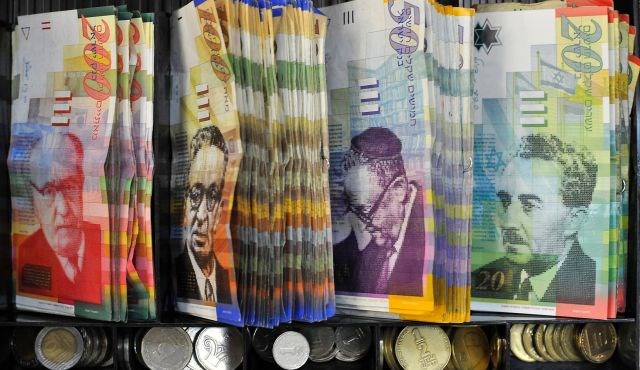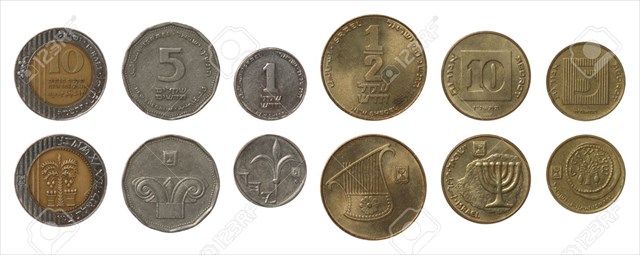The Israeli New Sheqel
History
The Israeli lira, followed by the old shekel, experienced frequent devaluations against the US dollar and other foreign currencies starting in the early 1960s and accelerating from the mid-1970s. This trend culminated in the old shekel suffering from hyperinflation in the early 1980s. After inflation was contained as a result of the 1985 Economic Stabilization Plan, the new shekel was introduced, replacing the old shekel on 1 January 1986, at a rate of 1,000 old sheqalim = 1 new shekel.
Since the economic crisis of the 1980s and introduction of the New Shekel, the Bank of Israel and the government of Israel have maintained much more careful and conservative fiscal and monetary policies along with the gradual introduction of various market-based economic reforms. In addition, the signing of free trade agreements helped the Israeli economy become more competitive, while heavy investment in its industrial and scientific base allowed the country to take advantage of opportunities associated with the rise of the global knowledge economy, thus greatly increasing exports and opening new markets for its products and services. As a result of these factors, inflation has been relatively low and the country now maintains a positive balance of payments (equivalent to about 3% of its GDP in 2010). Consequently, its currency has strengthened considerably, rising approximately 20% in value relative to the US dollar in the 2000s (decade), thereby reversing the trend of historical weakness the Israeli currency exhibited in the decades prior. In the future, the exploitation of recently discovered natural gas reserves off the Israeli coastline that is expected to begin in the mid-2010s decade and onwards may serve to further strengthen the Israeli currency.
Since 1 January 2003, the shekel has been a freely convertible currency. Since 7 May 2006, shekel derivative trading has also been available on the Chicago Mercantile Exchange. This makes the shekel one of only twenty or so world currencies for which there are widely available currency futures contracts in the foreign exchange market. It is also a currency that can be exchanged by consumers in many parts of the world. On 26 May 2008, CLS Bank International announced that it would settle payment instructions in Israeli New shekel, making the currency fully convertible.
Banknotes
Beginning on 4 September 1985, banknotes were introduced in denominations of 5, 10, and 50 new sheqalim. The 1 new shekel note followed on 8 May 1986, and the 20 new sheqalim note issued on 12 April 1988 completed the family. The 1, 5 and 10 new shekel notes used the same basic designs as the earlier 1,000, 5,000 and 10,000 old shekel notes but with the denominations altered.
In 1986, 100 new shekel notes were introduced, followed by 200 new shekel notes in 1991. The 1, 5 and 10 new shekel notes were later replaced by coins. A plan to issue a 500 shekel banknote, carrying the portrait of Yitzhak Rabin, was announced shortly after Rabin's assassination in 1995. However, due to low inflation rates, there was no need for such a banknote, and it was never issued. However, in February 2008 the Bank of Israel announced that the planning of an entirely new series of banknotes has started, and that the new series, to be issued in 2010, will most probably include a 500 shekel banknote as well. Though still not decided officially, the new series is likely to consist of polymer notes only. In December 2009 the Bank of Israel announced a new series to be issued in 2012, which would bear the images of Theodor Herzl, David Ben-Gurion, Menachem Begin and Yitzhak Rabin. The plan to issue a 500 shekel note was officially abandoned. The announcement was publicly criticized and a few days later, the governor of the Bank of Israel announced that the issue be reconsidered.
Coins
In 1985, coins in denominations of 1, 5 and 10 agorot, ½ and 1 new shekel were introduced. In 1990, 5 new sheqalim coins were introduced, followed by 10 new sheqalim in 1995. Production of 1 agora pieces ceased in 1990 too, and they were removed from circulation on 1 April 1991. A 2 new sheqalim coin was introduced on 9 December 2007. The 5 agorot coin, last minted in 2006, was removed from circulation on 1 January 2008. In April 2011, it was reported that new coins would be minted that would use less metal and thus lower costs. Counterfeiting would also be harder. The Bank of Israel is considering dropping the word "new" on the planned coins series. If approved, this would be the first replacement of all coins since the introduction of the new shekel coins in September 1985.


The appropriate permit has been obtained from the Dane County Parks Department. A copy of which is in the cache container. Please do not remove.
Congratulations to Kungfuhippie for the FTF!
